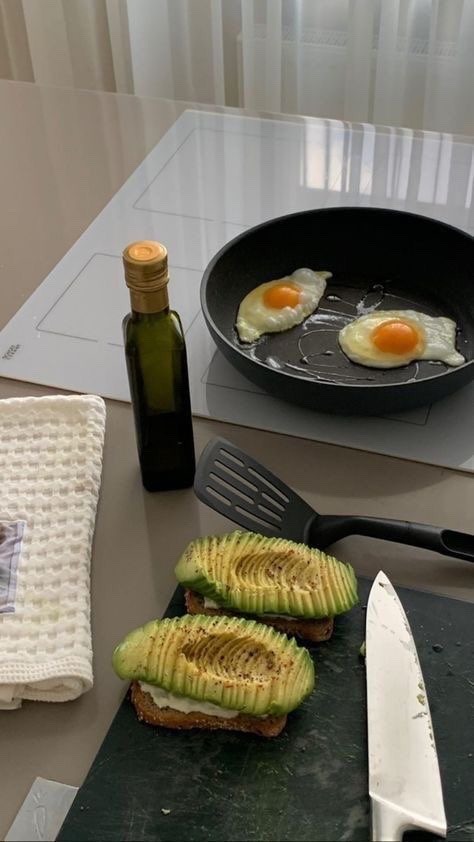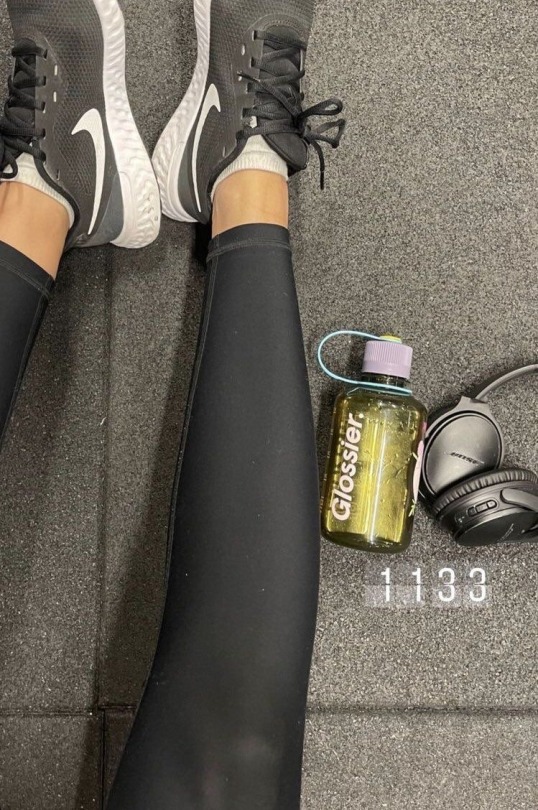The 10-10-10 Rule For Eye Health
Study Habits for Better Health
The 10-10-10 Rule for Eye Health
This is especially important for when you are using an electronic device to study as you tend to blink much less when using an electronic device in comparison to using analogue materials.
This can easily result in dry eyes, eye strain from blue light, and can, over time, eventually encourage the elongation of the eyeball which results in shortsightedness,
Every 10 minutes, take a 10 second break from looking at the screen by looking at an object that is at least 10 feet (approx. 3 metres) away from you
Personally, I find that it is most beneficial to look out a window at the environment around me to give my eyes relief from artificial light and to look at objects that are further away
If you do not have access to a window or an object far enough, looking at the furthest object you can find works well too
You can remember to do this by setting reminders, making a mental note while keeping an eye on the clock, or by incorporating this habit with the 10 minute planning technique
This helps with being more mindful of how much time you spend looking at a screen as well as monitoring how much time you have been working
Additionally, taking just a few seconds to look away from your screen allows you to be more conscious of your surroundings and to take stock of how you feel mentally and physically
I find that this habit has drastically improved my eye health and has reduced my stress when working
Taking a moment to step back from my work to focus on something within my environment prevents me from feeling overwhelmed by the work I'm doing
By removing myself from the situation, I allow myself to have an outsider's perspective and logically analyse how much I have left to do
Sometimes, when you're completing many tasks or large tasks, it feels like you're in a terribly huge pile of work but taking a step back allows you to regain control and say "It's only 3 tasks, I can do this"
Yoga Blocks, Textbooks, Pillows, or Variation for Spine Health
Often times, many of us tend to slouch or hunch over whilst studying or working. This consistent incorrect posture puts strain on your spine which can lead to inconvenient neck, shoulder, and back pain.
It is crucial to maintain correct and comfortable posture to ensure that our spine is in good health to allow us to work and go about our daily lives in comfort.
While sitting at my desk, I like to place a yoga block, a small textbook, a firm pillow, or a similar object perpendicular to my lower back and my chair
This instantly improves my posture by pushing me to sit upright rather than slouching or hunching over my desk
It is important to be lightly holding the yoga block or book perpendicular to the chair's backrest rather than leaning on the object
Heavily leaning on the object may pinch the spine and do more harm than good
Lightly holding the object makes your back muscles work consistently to make you sit upright which strengthens the back muscles and works to improve the overall alignment of the spine
This position must be comfortable, neutral, and feel natural
Another way of protecting your spine, as well as your whole body, is to work in different positions
Instead of the traditional work position of sitting at a desk, you could try standing, laying down on your front, or even sitting on your calves to work
Varying the positions in which the body is stationary for long periods of time prevents tension from building in specific areas which may lead to pain or cramping at a later stage
This also encourages the strengthening of the smaller muscles that assist in maintaining these positions
On occasion, I even like to study or watch lectures while holding a yoga position or stretching to keep my body in healthy condition
Pillows placed on your seat or behind your back can also help in protecting your spine from cramping or muscle soreness from sitting on a hard surface for prolonged periods of time
This option seems very simple but it can make the world of a difference in your comfort as you study
Maintaining Your Hand Health
Your hands are one of the most crucial components of your body. When studying, you use your hands to write, draw, type, and investigate. It is always important to take care of every part of your body but your hands need particular care.
When you are writing, ensure that your neck, torso, shoulders, arm, and hand are in a natural, comfortable, and neutral position
There should be no tension in your body and you should be sitting upright to prevent you from tiring easily
If you need to, rest your wrist on a small, plush object such as a a mousepad's wrist pad, a small cushion, a soft pencil case, or a folded piece of cloth
There is no single correct way to hold a pencil but there is criteria to help you find your personal optimal grip
You should be able to see exactly what you are writing without any of your fingers obstructing your view
Your hand should feel comfortable, controlled, and relaxed as you write
Your writing should be efficient, economic, and fluent
Using this criteria, my own pen grip is where my thumb, index, and middle fingers are the only fingers that hold and control my pencil while my ring and pinkie finger rest on my writing surface for support and mobility
When you are typing, your hand joints are vulnerable to strain due to the constant impacts of your fingers striking the keys
Even if your taps on the keys are gentle, this continuous movement can still strain the joints
Ensure that your wrist is relaxed and has a comfortable form of padding to rest on if you need to
Typing with all of your fingers helps distribute the force and movement of typing which results in less strain on each finger but learning this does take time and effort
With any form of using your hands, the most important health care for your hands is to stretch them
The simple act of stretching your hands greatly relieves muscle tension which assists in preventing the development of any ailments
Stretching your hands also improves mobility and assists with fine motor control to allow more precise and stable hand movements
The ideal stretches for the hands include extending your arm whilst turning your palm to the ceiling and gently pulling your four fingers downwards; gently pulling and rotating the thumb towards your upper arm with your palm facing inwards; clenching and unclenching your hands; wiggling your fingers; and interlocking your fingers and rotating your palms downwards to face away from you whilst extending your arms forward, then moving them above your head
You use your body as a vessel to gain knowledge from your physical environment.
Take good care of your body and it will take good care of your mind.♡
Education should always improve your mental and physical health.

More Posts from Amazing-grace-04 and Others


comfort book




dvnfemme ♡










the secret history - donna tartt

Who versus Whom
Okay, my hand is up there, too, making the confession that a lot of us are probably guilty of - not always knowing which is the word to use. Even native English speakers get this wrong. Even if we do (instinctively) get it right because it “sounds” better to our authorial ears, we can still not know WHY we do what we do.
So the general rule is
Who should be used to refer to the subject of a sentence.
Whom should be used to refer to the object of a verb or preposition.
Even when I read this my brain kind of quirks and says what does that mean in practice? Some sites say “ “who” is always subject to a verb, and that “whom” is always working as an object in a sentence. “ And my brain still quirks and goes “yeah, but what does THAT actually mean?”
This definition gets closer to making sense to me: The difference between “who” and “whom” is the same as the difference between “I” and “me;” “he” and “him;” “she” and “her.”
A faint glimmer appears. So, “Who cares?” is a case where who refers to the subject of the sentence and cares is the verb. And “To whom it may concern” is the object of the verb, not the subject of the sentence.
One tip: try writing the sentence to replace who and whom with he or him. If you can replace the word with “he” or “’she” then you should use who. However, if you can replace it with “him” or “her,” use whom. Let’s look at some examples.
I know who your best friend is! (He/she is your best friend. Not him/her is your best friend).
Who is going to the ball game? (He is going to the ball game, not him is going to the ball game)
The boy who went bare-legged got sunburnt. (He got sunburnt, not Him got sunburnt)
So, is it
Do you know who I am talking about?
or
Do you know whom I am talking about?
Using the rule above, rephrase the question as a sentence.
“I am talking about him” - which means that WHOM is the right answer!.
This post comes courtesy of a lovely line I just read in the story I’m not drunk enough for this by Kitten Kin.:
DON’T pretend you don’t know who I’m talking about!” John added, flicking one finger loose from around his mobile so that he could stab the air with it.
“Whom,” Sherlock corrected, and then bit down on his lips and began intently examining the back of the sofa.

“There is some good in this world, and it’s worth fighting for.”
— J.R.R. Tolkien, The Two Towers

Martin Buxbaum
When you change, don’t announce it. Just bloom.
-
 kingcityvandal reblogged this · 1 month ago
kingcityvandal reblogged this · 1 month ago -
 wilhelmmina liked this · 3 months ago
wilhelmmina liked this · 3 months ago -
 building-my-future liked this · 5 months ago
building-my-future liked this · 5 months ago -
 mswood liked this · 5 months ago
mswood liked this · 5 months ago -
 aapkipyari liked this · 7 months ago
aapkipyari liked this · 7 months ago -
 shadow-king-club liked this · 9 months ago
shadow-king-club liked this · 9 months ago -
 7va8p10q liked this · 1 year ago
7va8p10q liked this · 1 year ago -
 neoninis reblogged this · 1 year ago
neoninis reblogged this · 1 year ago -
 gamylost reblogged this · 1 year ago
gamylost reblogged this · 1 year ago -
 aleseum liked this · 1 year ago
aleseum liked this · 1 year ago -
 thefuturekatana liked this · 1 year ago
thefuturekatana liked this · 1 year ago -
 najyxo liked this · 1 year ago
najyxo liked this · 1 year ago -
 environmentalgothic reblogged this · 1 year ago
environmentalgothic reblogged this · 1 year ago -
 idyllicluna liked this · 1 year ago
idyllicluna liked this · 1 year ago -
 coatrasliscapig liked this · 1 year ago
coatrasliscapig liked this · 1 year ago -
 i-darkling liked this · 1 year ago
i-darkling liked this · 1 year ago -
 hijabirealms liked this · 1 year ago
hijabirealms liked this · 1 year ago -
 at-uni-we-wear-pink reblogged this · 1 year ago
at-uni-we-wear-pink reblogged this · 1 year ago -
 fae-fatale reblogged this · 1 year ago
fae-fatale reblogged this · 1 year ago -
 awrathsodarkandvelvet liked this · 1 year ago
awrathsodarkandvelvet liked this · 1 year ago -
 neoninis reblogged this · 1 year ago
neoninis reblogged this · 1 year ago -
 xxharystlesxx liked this · 1 year ago
xxharystlesxx liked this · 1 year ago -
 azraanth liked this · 1 year ago
azraanth liked this · 1 year ago -
 charmnotes liked this · 1 year ago
charmnotes liked this · 1 year ago -
 fabfabfa-fab reblogged this · 1 year ago
fabfabfa-fab reblogged this · 1 year ago -
 karomiyuji reblogged this · 1 year ago
karomiyuji reblogged this · 1 year ago -
 fae-fatale liked this · 1 year ago
fae-fatale liked this · 1 year ago -
 tateamschel liked this · 1 year ago
tateamschel liked this · 1 year ago -
 beomgyusshoebrush liked this · 2 years ago
beomgyusshoebrush liked this · 2 years ago -
 telovettu liked this · 2 years ago
telovettu liked this · 2 years ago -
 gastspeninab liked this · 2 years ago
gastspeninab liked this · 2 years ago

in love with: Jesus, books, coffee, tea, plants, healthy eating, & working out. also supernatural, sherlock, harry potter, and the secret history. and agatha christie
81 posts